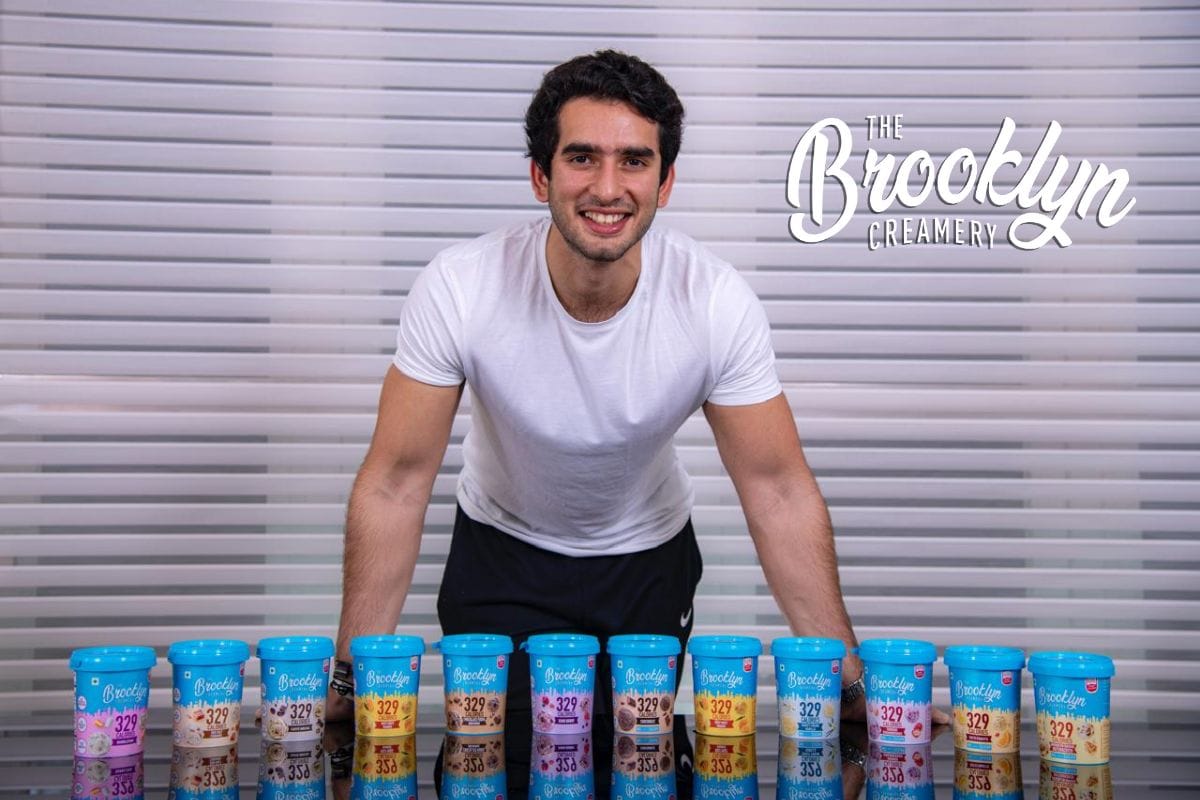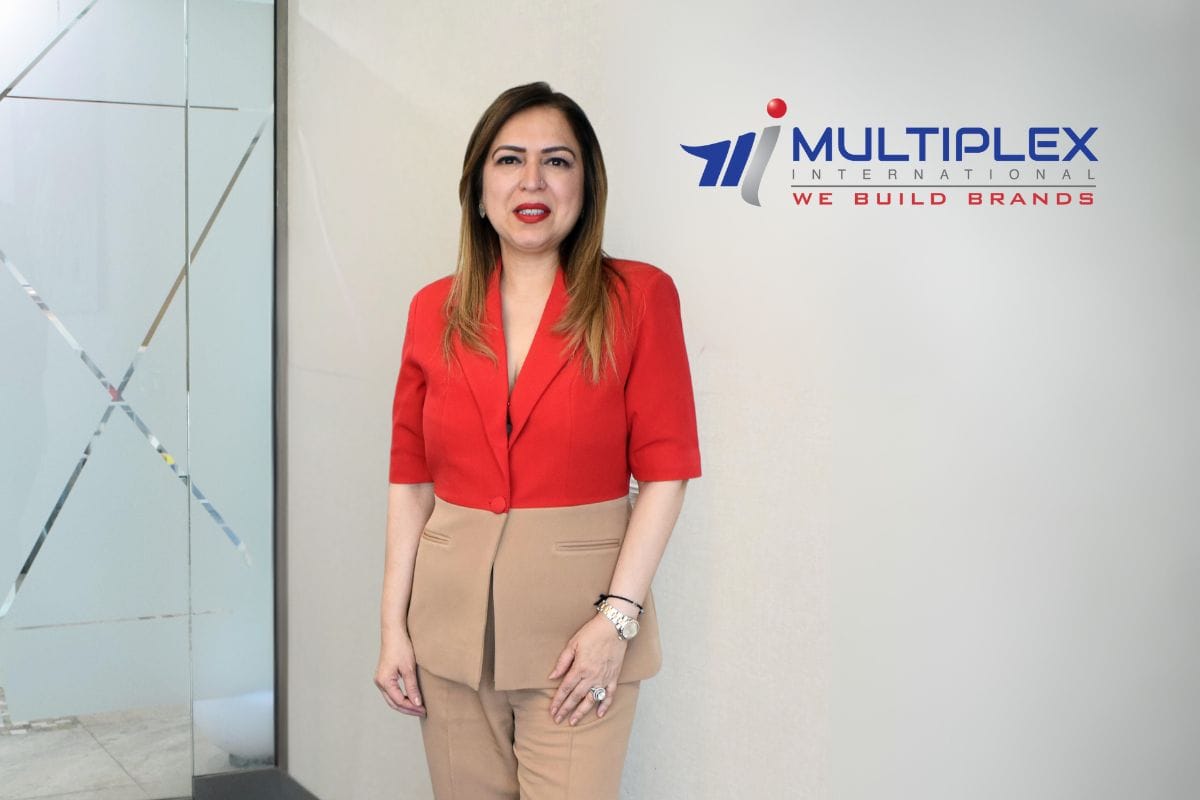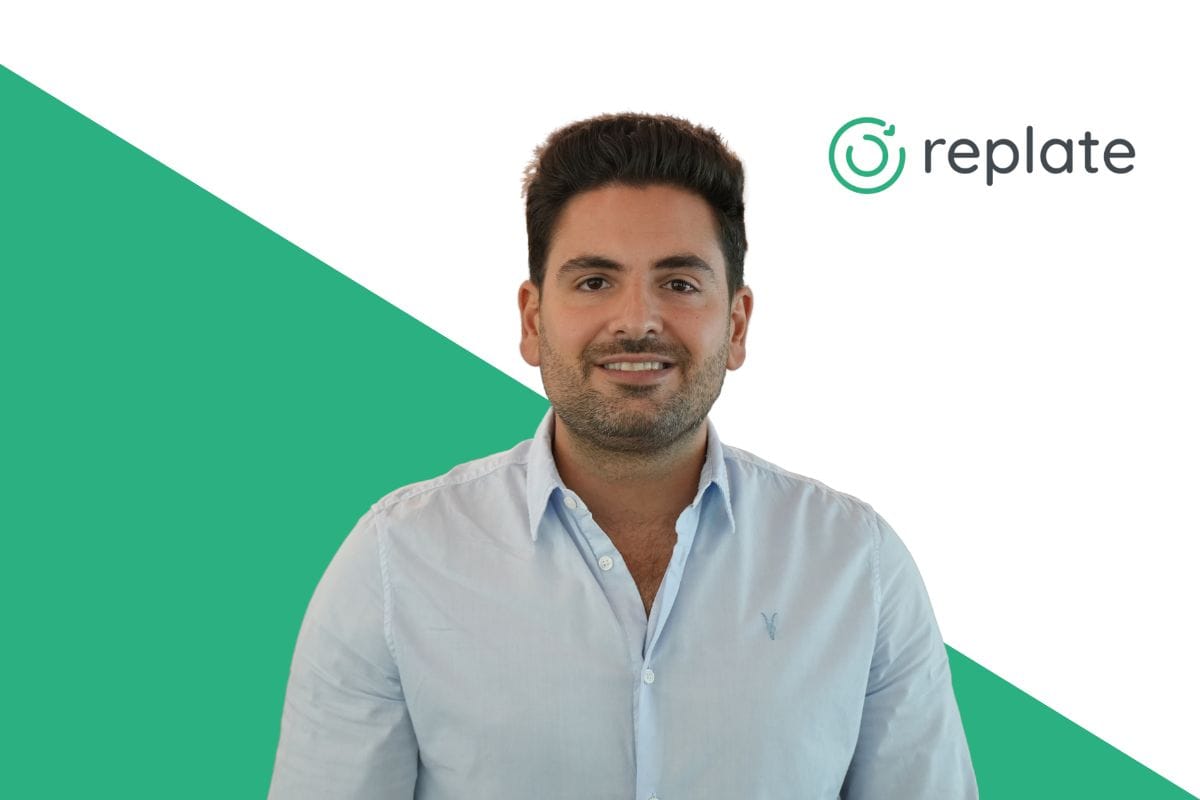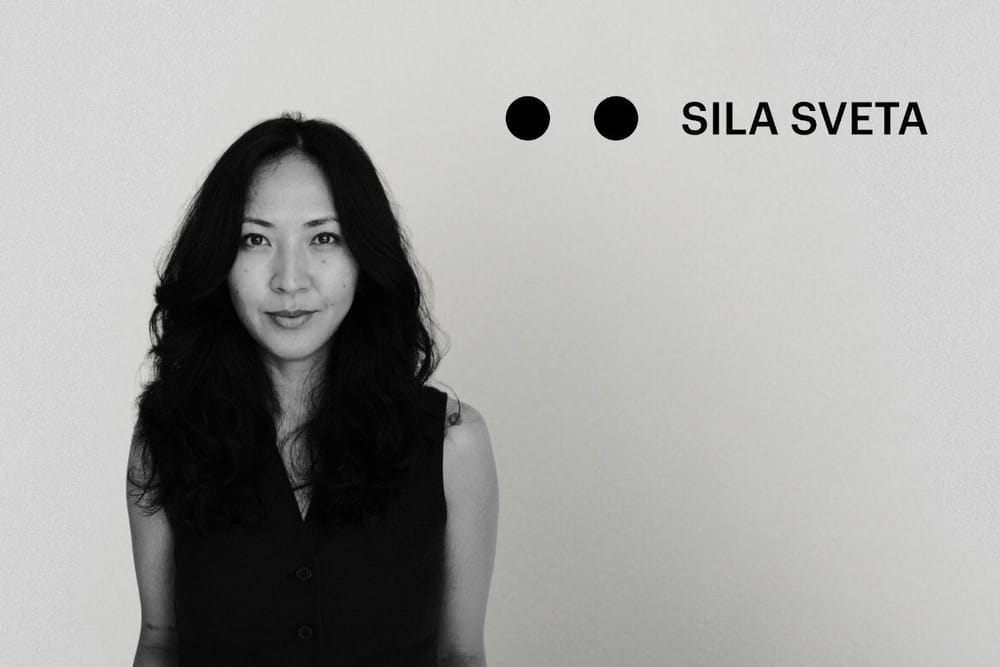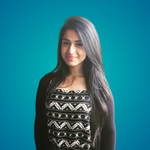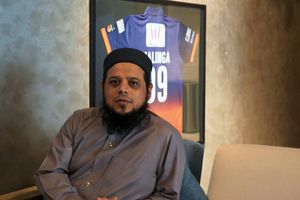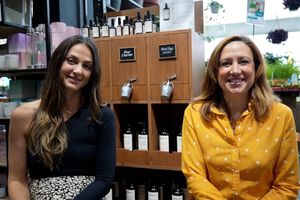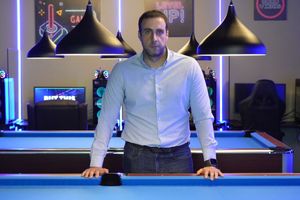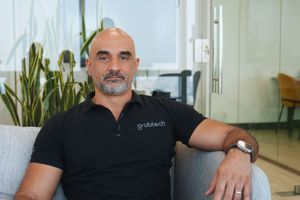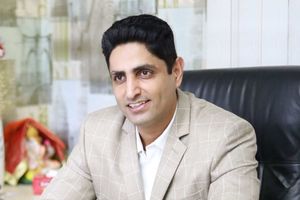Magrifa Kamiyeva, the General Producer for Sila Sveta’s MENA projects, plays a crucial role in delivering some of the most ambitious multimedia productions in the region, including the FIFA World Cup 2022 Closing Ceremony and the AFC Asian Cup 2023 Opening Ceremony.
Founded in 2008, Sila Sveta is an international multimedia production studio known for blending art and technology to create immersive experiences. Specializing in projection mapping, interactive installations, and digital content creation, the company has completed over 750 projects globally, from concerts and festivals to product launches and museums.
In this interview, Magrifa shares insights into Sila Sveta’s unique creative process and how the company continues to push the boundaries of visual storytelling and digital entertainment.
Sila Sveta means “power of light.” Can you tell us the story behind the name and how you launched the company?
The name itself originated from the company’s history. We have two founders, Alexi and Alexander, both from Moscow. They started different businesses in the early 2000s, working in areas like e-commerce and other ventures—pretty much hustling. At some point, they discovered light projectors and saw potential in creating a business around them because they were fascinated by how projectors could transform buildings and scenes.
The idea was that when you project something, it adds a magical touch to whatever you're displaying. They built a business around this concept and gained popularity after executing one project, which I believe was for a nightclub in Moscow. They set up several projectors, and behind this success was a highly motivated team eager to create something beautiful.
After that project, they realized this could be a legitimate business—not just lighting up spaces but creating beautiful, transformative experiences. That’s where the name “Power of Light” comes from. Light, whether from projectors, beams, or lasers, has the power to transform spaces and create impactful experiences. It can evoke emotions and even inspire a sense of wonder or a dream-like experience—this is the essence of the "Power of Light."
How many years has it been since Sila Sveta was founded?
It's been 16 years since the company was founded, which is a solid amount of time to be in the industry. However, 16 years can still feel small when you think about how far we've come, from starting with nothing to what we have now.
So far, we've completed more than 750 projects worldwide, operating in around 40 countries.
We also have offices in several locations—Russia, our European office in Cyprus, and our office in New York overseeing NAFTA projects. Our latest office is in Dubai, where we are now. Over these 16 years, we've expanded, developed, and found our niche in the industry.
Sila Sveta originated in Moscow and has worked globally. How does the digital entertainment landscape in Dubai compare to other regions, and why did you choose to establish your MENA base here?
In the past couple of years, we've done quite a few projects in the MENA region, particularly in Qatar due to the World Cup. We handled numerous projects during the event, including the closing ceremony.
We've also had several projects in the UAE, mostly in Abu Dhabi, including energy projects and the launch of the Nissan Patrol, which is a national car we're proud to be associated with. We've also worked on projects in Saudi Arabia and other countries.
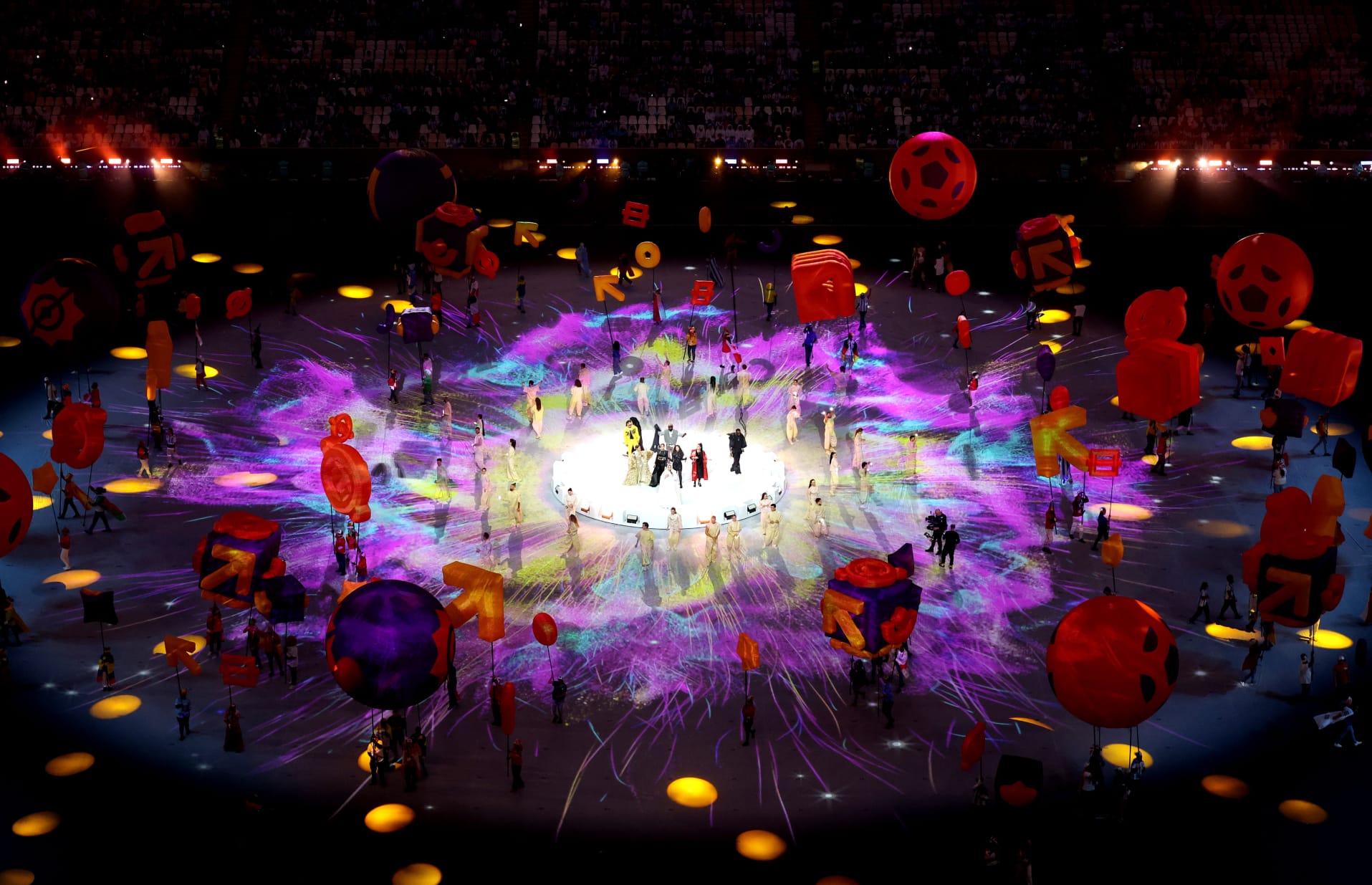

FIFA World Cup Qatar 2022

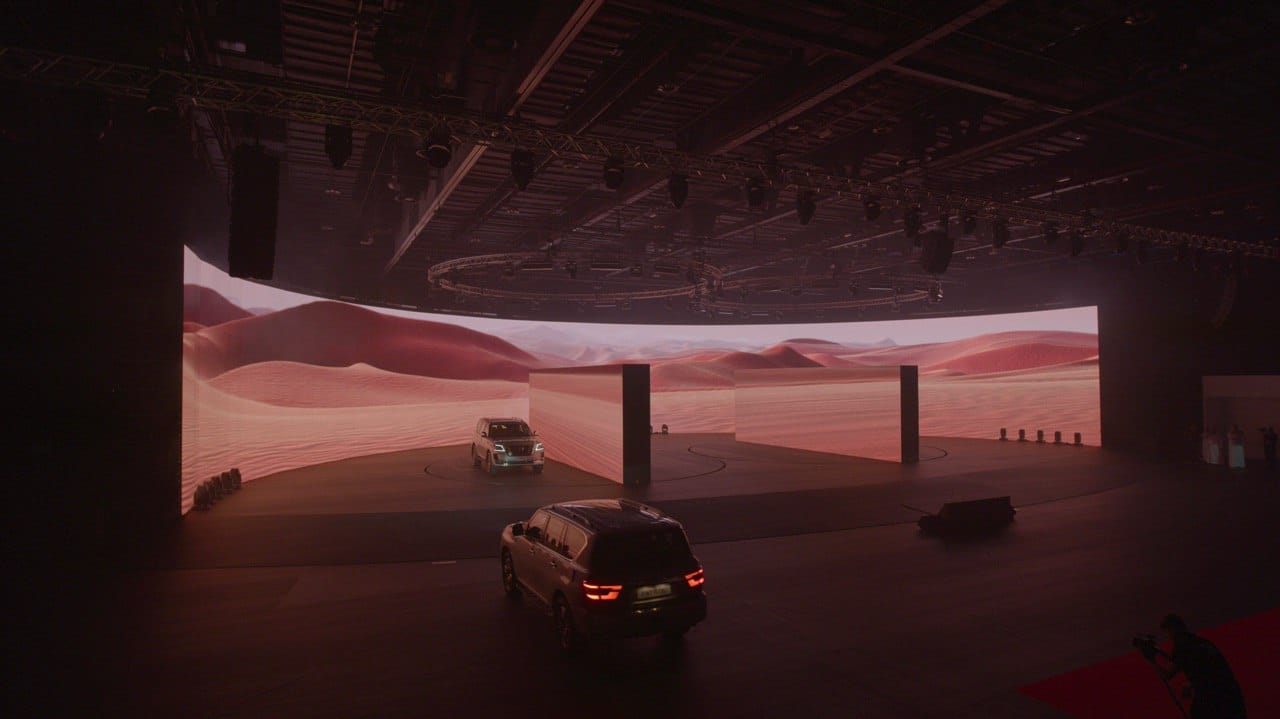
Nissan Patrol Launch
The decision to establish an office in the MENA region was a natural progression, given the volume of work we've done here. We see how rapidly the area is developing and the level of activity happening here. Many global companies are based in the region, and opening an office in Dubai made sense for various reasons, starting with transportation—it's easy to travel to and from Dubai to almost anywhere. Additionally, the economic environment is favorable, with low taxation and plenty of government incentives that encourage companies to set up here.
The main reason for choosing Dubai, though, is the energy and dynamism of the city. There's constant activity, networking, and hustle, which aligns with our business.
I also love living in Dubai because it's safe and convenient. Opening our first MENA office here was the right choice for a variety of reasons, from the economic climate to transportation, and simply living in the city.
When comparing MENA to other regions globally, it's important to note that each area has its own unique landscape. For example, projects in Russia differ from those in China, which are again different from projects in America. What we love about this region is that people here are always seeking something very innovative—technologically advanced and fresh ideas. There aren't many clichés or rigid expectations. Even when we propose something absolutely crazy, it’s more likely to be accepted in MENA, which is rare.
I believe this openness stems from the fact that the region hasn't seen thousands of projects that set rigid standards. Also, the region is still being built, culturally and infrastructure-wise, so there's an open mindset to new ideas and out-of-the-box thinking. This is a perfect match for us because we often propose unique and ambitious ideas, and people here are very receptive to that. We also appreciate the focus on big events. Over the last few years, and likely for the next decade, most of the world's biggest events will happen in this region. This means more ceremonies, shows, and museums, which is very exciting for us.
Your work seamlessly blends technology with art and merges digital with physical elements. How do you make something that seems so complex appear effortless?
Our intention is always to create something that makes the audience go, "Wow!"—a magical experience where they don’t understand what's behind it. So, the fact that you noticed that is kudos to you! It usually starts with an idea, not with the technology. We think about what we want to achieve within the show, exhibition, or installation. We consider the space, the timing, and of course, any limitations we might face.
There are always limitations, so we ask ourselves what can be done, what we want to create, and what kind of reaction or emotions we want to evoke from visitors. Then, we start thinking about which technologies can help us achieve that. We're fortunate to have a talented creative team, and equally important, a skilled technical team on every project.
Typically, the creative team comes up with the idea, saying, "I want to create this effect in a certain way," and the technical team figures out what tools or methods we can use to make that vision a reality.
Of course, being in the industry, we keep up with new technologies and products that emerge every year—things that weren’t even imaginable five years ago. When we can, we use them, but we’re not chasing the newest innovations just for the sake of it.
Our focus is always on the idea first, and we use whatever tools will best help us bring that idea to life and make it seem effortless, as you mentioned.
In many ways, we're like magicians. When you watch a magic show, it feels like pure magic, but when you're behind the scenes, the magic disappears, and it becomes about the craft. That’s where the real appreciation lies.
Sila Sveta specializes in turnkey production. Is this a common approach in interactive media, or was it a strategic decision unique to your business?
I don’t think it's a standard approach, but in the multimedia entertainment industry, there aren’t really strict standards. Everyone does what they believe they can and should do.
For us, the decision to offer turnkey solutions was straightforward. We create ambitious ideas, and typically, here’s how a project operates: a client comes to us with an event and a general idea of what they want, along with a set date. For example, they might say, “We have an event in three months, and we want to create something special,” but they don’t know the details—nor do they need to. It’s our job to take that request and handle the execution without overwhelming them.
If we only handled the creative side and pitched an idea the client loves, but then the technical team comes in and says it’s impossible, that’s where problems arise. So, because our ideas are often custom, we ensure our technical team—composed of talented engineers and technical directors—works closely with the creative team from the start. We even have an R&D lab that can write code or develop whatever is needed.
When our creative director comes up with an idea, it’s always discussed with the technical team, who research to determine whether it’s possible. If something initially seems impossible, the next question is, “How can we make it possible?” So, when we present to clients, we’re 100% sure that what we propose can be done within the time frame and budget.
This approach is key for us. It allows us to guarantee that we can execute the project while ensuring minimal involvement from the client, giving them peace of mind that everything will go smoothly.
The reason we chose the turnkey model is that we believe it’s essential to have both strong creative and technical teams working together. We also have a strong team of producers, project managers, and operations staff who oversee budgets, timelines, and client relationships.
We call this our "Project Trio," consisting of the producer, creative director, and technical director. This team is responsible for their respective areas of expertise, ensuring the project is executed at 100%—or, to be more ambitious, 120%. This structure prevents issues like a producer stepping into technical areas or a creative director worrying about the budget. Each person stays focused on their role, which helps deliver the project successfully.
Projection mapping is your USP. Could you explain the technical aspects and costs involved in achieving the perfect visual experience?
Projection mapping was one of the key factors that went viral for us, helping Sila Sveta gain global recognition. The concept involves mapping visuals onto large surfaces, like buildings, using projectors. Our viral journey began with a project we did using TouchDesigner. There’s an Instagram page and website where TouchDesigner showcases interesting creators who use their platform, and they featured our project. Overnight, we went viral, which led to a surge of requests for projection mapping. This popularity even prompted us to create a PR campaign to explore new directions and offer something different.
The project "Levitation," is a bit different. It uses a technology called XR (Extended Reality). In XR, you have three seamless screens working together to create an immersive environment—essentially like a green screen, but the content is visible in real time. You can place an avatar or anything within the content and build a fully interactive space around it.
We used this technology for Billie Eilish’s virtual concert. She performed a few songs in XR, and we designed a couple of them—one featured spiders and another involved a car. Both projection mapping and XR are distinct technologies, but both must be done beautifully and with precision to deliver a seamless visual experience.
There are three crucial elements to achieving perfect projection mapping. The first one is planning. For proper mapping, you need to perform 3D scanning. A special scanner is used to scan the building, which is especially important for venues like opera houses or older buildings with intricate details. The scanning gives you a 3D model of the building, so you know exactly what works and how to execute it. This is the preparation stage. Afterward, you create the content—deciding what will be projected, planning the engineering aspects such as how many projectors you will use, where to place them, and where the sound system will go.
Next is execution. You must allocate time for tests, rehearsals, and any adjustments you might need to make. This is essential to ensure the show runs smoothly. The process is more complex because it's not just about preparation and developing content; you also need to work closely with the camera team since the project is being filmed.
For instance, if you’re filming an actor in a scene set in the desert, you need to adjust the content to match the camera’s perspective. The content must be aligned so that, from the camera’s point of view, it looks as if the actor is really in the desert. This requires tight collaboration between the camera team, the actor, and the content creators to ensure everything appears seamless. It’s similar to a green screen effect, but everything is happening in real time on a real screen, which is much more advanced.
XR is a particularly interesting technology. Most people don’t know about it, but we use it a lot, especially for 360-degree modeling. It’s a cylinder with cameras, and I think it was first used for The Matrix movie if I’m not mistaken.
For example, when we need a 3D model of a person, we use the 360-degree setup to capture them and then recreate their exact likeness in CGI.
A lot of this technology is cross-industry. While most of it comes from the entertainment sector, some elements come from engineering. The 360-degree camera was originally used in the film, but now we use it for CGI modeling, and XR technology, which began in the event industry, is now making its way into the film. There are many cross-industry technological adaptations happening today.
Behind every project you’ve done, there’s a lot of detail that goes into the concept and storytelling. How do you approach concept creation across different venues and genres?
That's one of the most challenging aspects for our creative directors. We actually charge for ideas because, for creative people, the main effort and energy go into thinking about the concept—what it could be, how it could work, and why it should be one way or another. It involves figuring out the story behind it and the emotions we want to evoke.
Personally, as a producer, I don’t fully know their exact process, as it's different for everyone. But overall, they focus on the story, the meaning, and the emotions we want the viewer or visitor to experience, whether it’s for a temporary event or a permanent installation. They also consider the available resources, the time we have, and, importantly, the location.
For instance, the location often plays a significant role in the creative process. A great example is the closing ceremony of the World Cup in Qatar. The first shot featured a desert rose made of petals with red lighting, while the petals themselves were white. This was a tribute to Qatar as the host country, as the desert rose is a national symbol, and the colors—white and burgundy—represent the Qatari flag.
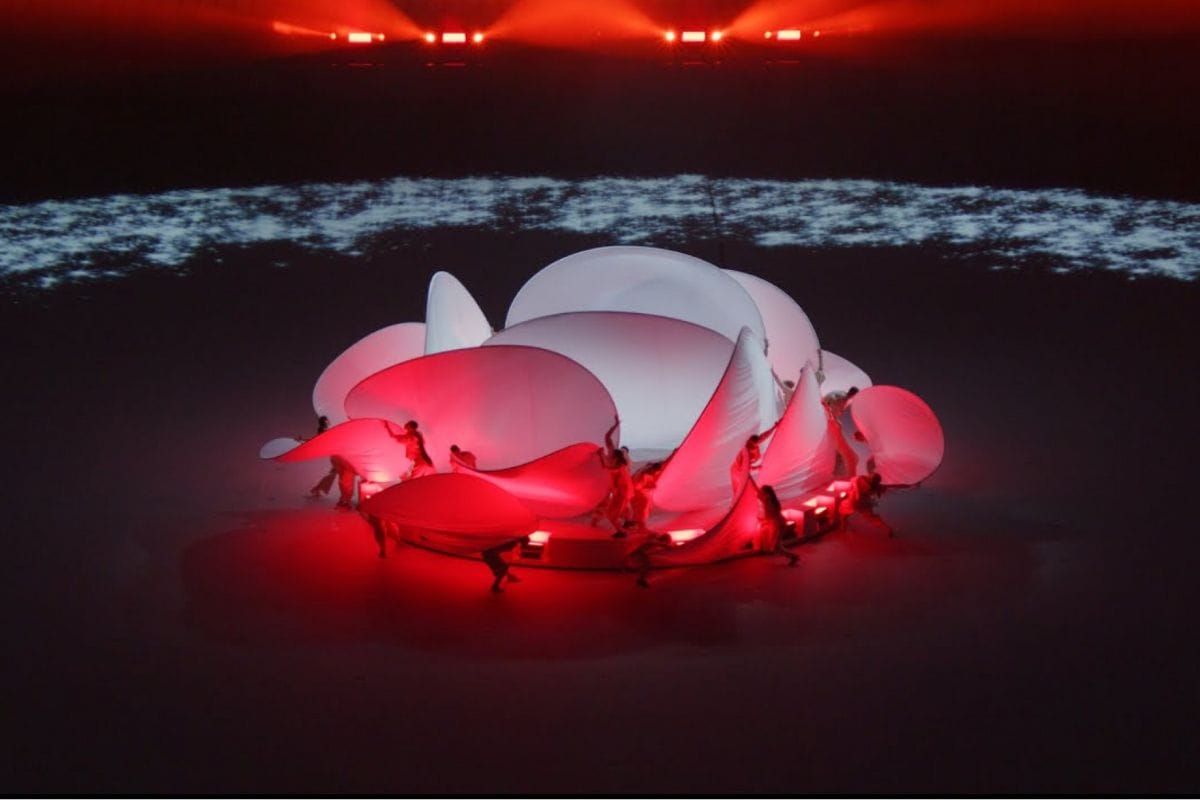
Creative directors spend a lot of time researching and understanding the depth of the story they're telling. It could be influenced by colors, modern elements, or cultural symbols, which often shape the main idea. They then visualize how it would look and the emotions it would convey.
This process is very time-consuming and draining for the creative team. Clients sometimes think it’s easy and assume we have many ideas ready to go, but it’s never that simple. That’s why we typically charge for creative ideas.
How do you deal with creative burnout?
I don’t think we have a complete solution to it. First of all, the people in our studio are absolutely passionate about what they do. I’d say most of us are lucky enough to be doing what we love and getting paid for it, which is a big motivation to keep going. But burnout does happen, and it affects everyone at some point. We try to address it by checking in with the team, asking if they’re okay or if they want to take on fewer projects during certain periods.
One of the great things about our work environment is the balance between commercial and artistic projects. Artistic projects—whether they’re for festivals, techno parties, stage designs, or art installations—offer a chance to reset. These are usually nonprofit, but they provide creative freedom and a break from corporate work. Even on corporate projects, though, we generally work on things we find beautiful and enjoy.
We rarely do something we dislike. In fact, I’ve been in situations where management stood by the team when a client requested changes we didn’t feel were right, saying, "Maybe we shouldn’t do this if we don’t believe in it." That’s part of the company’s philosophy.
So while burnout happens, it’s usually from having too much to do. In those cases, the solution is to take a break or reduce the workload. And when there’s too much corporate work, we have the option to take on artistic projects to fulfill our creative freedom.
How do you handle the pressure of expectations from clients familiar with your past work and balance the success of your past projects while innovating for a new one?
First, experience plays a key role in managing client expectations. We have a detailed pipeline and process for every project, which we communicate openly with the client. Everything is clearly outlined in the contract so both parties know what to expect. For example, when creating content, we have several steps where we show progress, gather feedback, discuss it, and implement changes. This process is well-communicated, ensuring that both we and the client know when updates will be shared and when feedback is expected. While clients can provide additional feedback, they also understand that extensive changes may incur extra costs since we maintain transparency throughout the project. This level of communication and planning helps to significantly reduce pressure.
As for handling unexpected changes or issues, that responsibility typically falls on the producer, technical director, or content supervisor, who are tasked with proper planning and risk management.
Even when things go wrong, we aim for a minimum of 100% effort—though we often strive for 120%.
In stressful situations, our focus is not on assigning blame but on finding solutions. After the project, we can review and address any issues, but during the process, our priority is doing everything we can to resolve problems and deliver the best possible result.
Given how unique each of your projects are, there is a lot of collaboration involved. How do you select and work with other creatives or technologists required for a new project?
It depends on the project's needs. Sometimes, we require specific work to be done, so we look for people who can handle it within the required timeframe and budget. In those cases, we try to collaborate with local professionals because they know the industry and can be more readily available on-site.
Other times, we seek a local touch, especially when it comes to talents like dancers, singers, directors, or choreographers. In those instances, we actively research and seek out local artists or talent to collaborate with on a specific project.
When possible, we prefer working with local partners. The process of selecting them depends on what needs to be done and who is capable of doing it. The industry is relatively small, so it's often easy to find the right partners through one or two connections.
As for talent, we conduct research based on the specific task and find individuals with whom we have creative chemistry.
You have led some of the biggest projects for Sila Sveta in MENA, like the FIFA World Cup Qatar 2022 Closing Ceremony and the AFC Asian Cup Qatar 2023 Opening Ceremony. How did you handle the unique challenges of events of this scale?
From my perspective, the surprising thing is that the most challenging projects are usually the artistic ones because they often come with almost zero budget but high creative expectations. Those are difficult to manage.
However, for larger events like the Asian Cup or the World Cup Closing Ceremony, it's actually not as hard to execute. These big projects have large, professional teams involved, and for clients like the government or FIFA, they allocate significant resources. You’re usually working with the best in the industry, so it’s not that difficult. The main task is to be present, plan properly, and stay involved in all communication to address any issues or troubleshoot when needed. In terms of execution, these big projects are often the easiest. The pressure and responsibility are high, but execution-wise, they tend to run smoothly.
How long does a large-scale project cycle usually take? What kind of project is the hardest to execute?
It depends on the scale. For something big and complex, like the Asian Cup, a year is typically the minimum. I think we spent over a year on that project. For smaller projects, like a car launch or stage design, four months is a good timeframe to start. The more complex the project, the earlier you should start. For simpler projects, three to four months is usually enough. We've done some projects within one month, but there are limits to what can be achieved in such a short time.
There are a lot of advances in 360-degree image mapping and VR. Are there any upcoming technologies that you are particularly excited about?
A lot, as I mentioned earlier—technology is developing daily. There are so many new advancements in the industry, and even outside of it, that could be adopted. One area we’re particularly excited about is "phygital," where physical and digital objects merge. I also believe holograms will become more realistic, and AI-backed technology is another big trend. I think robots will eventually be incorporated into the entertainment industry as well.
One of the most exciting recent developments in our field is transparent screens—basically, glass that acts as an LED screen. You can see through it, but it also displays content on top. This technology is already being used in some of our projects and will likely become even bigger. Overall, there are constant advancements, and they’re making things easier for creators.
The UAE—and Dubai in particular—is investing heavily in AI. How do you see that influencing your projects, and what new trends do you see this creating in the MENA market?
For us, AI is already becoming a tool we’re accustomed to. From offline work, where tools like Jupyter are part of our daily operations, to using AI for concept creation. We don’t use AI a lot, but we sometimes employ tools like DALL·E to quickly generate visual concepts from prompts and show them to clients on the spot.
In some performances, we use AI to generate real-time content by feeding it data, and the visuals are created on the go. AI is already feeling like a standard tool for us, and as governments and companies continue to support AI development, I believe more tools will become accessible to a wider audience.
Do you believe creatives are at risk of getting replaced by AI and these new technologies?
No, I don’t think AI is taking jobs from the creative community. If anything, it’s a tool for us. You can either learn to use it or be intimidated by it. For example, during the Asian Cup, we had to quickly create models for two huge inflatable jackals that would be brought onto the stage for the final shot. The meaning behind them was important to the show, and we were asked to deliver the models overnight.
We used AI to quickly generate possible shapes and ideas. After a few iterations, we chose the ones we liked, made some tweaks, and modeled them based on the AI-generated images. In the end, those giant jackals were on the stadium stage. AI didn’t replace us—it helped us move faster. You still need to guide the AI, tweak the results, and refine them. In my personal opinion, I don’t think the creative community is at risk of losing jobs to AI. Instead, it will help us do things bigger and faster.
Can you tell us about a favorite project of yours? Can you tell us about a project where the final result wasn’t what you had envisioned, and what you learned from that?
I don’t have a favorite project yet, but the closing ceremony for the World Cup was really beautiful. It was done in a very short period, and it was risky for us, so that made it special. Plus, the final game itself was a once-in-a-lifetime opportunity. However, like with any project, there are always things I think we could have done better. Right after the project ends, I usually find things I’m not completely happy with. But then, after a week or two, I look back and realize it was actually pretty great.
I think all perfectionists feel this way—you’re never fully satisfied with what you’ve done in the moment. It takes some time to reflect and see the beauty in the final result. I don’t have a favorite project yet, but I hope to in the future. I’d love to do the Super Bowl one day, and maybe after that, I’ll have a favorite project to talk about. In my opinion, this mindset is common in the entertainment industry. The people who work here are often addicted to the pursuit of excellence, which is why they’re never fully satisfied with their work. But perhaps this applies to other industries as well—anywhere people are passionate about what they do and always strive for the best.
As for projects not matching our vision, I don’t think we’ve ever had one where the final result didn’t align with what we envisioned.
Given the unique nature of interactive media, what measures do you take to ensure your projects are inclusive of People of Determination?
I would say, unfortunately, we’re not doing enough, and I think that applies to the whole industry. I really love the recent trends, like sign language interpreters becoming more prominent and even going viral, sometimes outshining the artists themselves. For example, think about the Rihanna Super Bowl Halftime Show—those initiatives are great.
In our case, it really depends on the project. Sometimes, we’re only responsible for stage design and not the entire show, so we don’t always have the authority to request that certain inclusivity measures be implemented. Often, it’s up to the country’s regulations or the event organizers to ensure inclusivity for People of Determination, or it comes from the artists themselves.
However, when we work on projects like museums or permanent installations, we always try to include things like Braille or consider the height and accessibility of interactive elements. But when it comes to shows or stage designs, we’re limited by the scope of our role, and we don’t always have the opportunity to make the experience fully accessible for all audiences.
That said, I’m glad to see inclusivity becoming a trend in the industry, thanks to big artists like Coldplay, Taylor Swift, and Rihanna, who have pushed these changes. I think standards are evolving, and I hope governments will introduce more regulations to make inclusivity a standard practice. It could be moving faster, but we are heading in the right direction. Whenever we have the chance, we try to incorporate inclusivity into our projects. Although we are limited by the current industry structure, we’re eager to embrace these changes as they become the norm.
Watch the interview:
Also Read:

